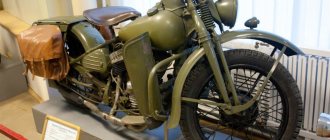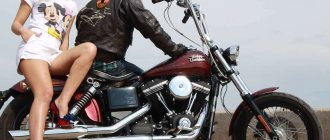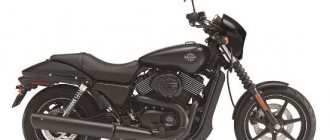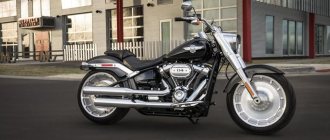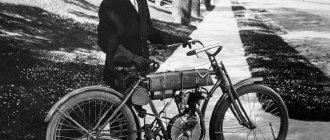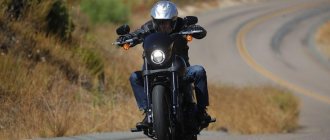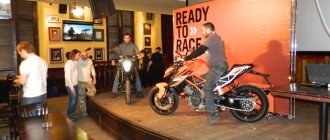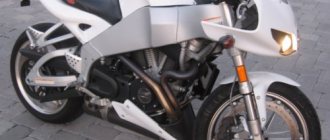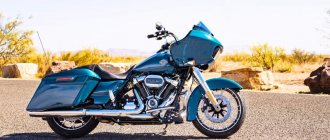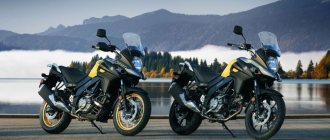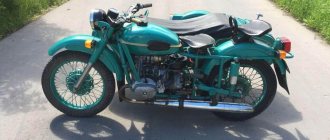motorcycle strangers
The name Panhead comes from the shape of the cylinder head cover, "pan" translated as cup, basin or pan. If you look at the engine, you can easily understand why it is named that way. Produced from 1948 to 1965 and was replaced by Shovel. The Pan replaced the Knucklehead and the changes concerned the upper half of the engine: the design of the cylinder heads, the cylinders themselves, a new piston, improved lubrication (the oil pump became more efficient, the lines were hidden inside) and lower fuel consumption. "Bottom end", i.e. the crankcase and crankshaft remained without major changes, except that the camshaft was redone. A major innovation was the appearance of hydraulic valve lash compensators. The engine also ran cooler and was 8lbs or 3.6kg lighter. The frame was stretched to accommodate the taller engine and was called the "wishbone" due to the bent downtubes. 1948 was the only year when cylinder head covers were chrome plated, followed by stainless steel covers. The first Pan had about the same power as the Knuckle - about 50 hp @ 4800 rpm with a 74″ displacement.
In 1949, the Hydra Glide motorcycle appeared - the first with a hydraulic fork. Despite the availability of a new fork, it was recommended to install a springer on models with a sidecar because the trail value was insufficient for normal motorcycle stability.
In 1951, new piston rings were installed to prevent scuffing on the cylinders in the event of breakdowns. The camshaft device has changed. The rollers on the pushers used to get loose, but now the pushers are made with grooves for hydraulic compensators, and the oil flow through the pusher guides has also been improved. In the middle of the year, they began to install the M-74B carburetor, which remained until 1965.
In 1953, the hydraulic lifters were moved from the top of the lifters to the top of the camshaft lobes and they were moved closer to the oil pump, which improved their lubrication. The FLE 74ci “Traffic Combination” model is introduced, designed for low-speed driving or escort.
1955 brought the FLH model, 73.73″ (1208.19cc) engine, 3.44″ x 4″ bore/stroke, 60 bhp @ 4,800 rpm, 8:1 compression ratio, 33mm Schebler carburetor, 59.5″ wheelbase, weight 598 lbs, 3.75 gallon fuel tank, 1 gallon oil tank, max speed 105 mph. The intake O-ring handles vibration better, and the crankcase has new caps and Timken bearings.
In 1956, the engine received a power increase of approximately 5 hp, due to a more “easy-breathing” air filter and Victory camshaft.
In 1958, the Duo-Glide model replaced the Hydra Glide and was produced until 1964. In 1961, they switched to single fire ignition, the left flywheel received a TDC mark for the rear cylinder.
In 1965, the first Harley with an electric start appeared - the Electra Glide. New frame, 12-volt electrics, oil tank moved to the left side. Compression ratio 8:1, 60 bhp @ 5,400 rpm, 12V battery, 60″ wheelbase, weight 783 lbs, max. speed 100 mph.
As with other Harley engines, there are a huge number of aftermarket parts for stock Pans and ready-made engines from RevTech or S&S.
The most famous Panhead bike is Captain America from Easy Rider. It was built by customizer Ben Hardy (by the way, he is black) based on a Hydra-Glide policeman bought at auction in Florida. Only the engine remained unchanged, everything else was redone. An icon of the chopper style - nothing superfluous, a long fork, a high handlebar and backrest, a small tank, no front brakes, turn signals, or rear suspension. Unfortunately, one motorcycle was destroyed during the filming of the final scene, and the second was stolen and disappeared somewhere unknown. But a huge number of replicas have appeared all over the world. Every self-respecting customizer has built a chopper
